Succulents come in a wide variety of shapes, sizes, and colors, and can be found all over the world. Some examples of popular succulents include cacti, aloe vera, echeveria, sedum, and agave. There are different types of Succulents in India and each one is unique in shape and size.
Succulents are often grown as houseplants or used in landscaping and garden design due to their unique appearance and easy care requirements. They are generally low-maintenance and can tolerate a wide range of temperatures and light conditions, making them a great choice for beginners or those with limited gardening experience.
What is a Succulent?
A succulent is a type of plant that has thick, fleshy leaves, stems, or roots that are capable of storing water. This adaptation allows succulents to thrive in arid or semi-arid environments where water is scarce.
10 Types of Succulents in India
1. Aloe Vera
Aloe vera is one of the types of succulents in India that can be easily found in Indian home gardens. This plant species is widely cultivated for medicinal, cosmetic, and decorative purposes. It has thick, fleshy leaves that contain a clear, gel-like substance in the center, which is commonly used in skincare products, such as lotions and sunscreens.
Aloe vera is believed to have many health benefits, including promoting wound healing, reducing inflammation, and improving digestion. It is also said to have antioxidant properties and to help lower blood sugar levels in people with diabetes.
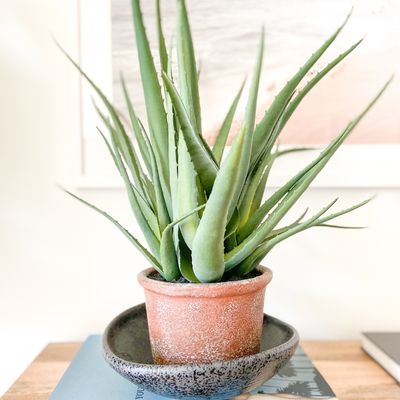
In addition to its medicinal uses, aloe vera is often used as an ornamental plant in gardens and landscapes. It is a low-maintenance plant that can tolerate a wide range of temperatures and soil types.
Overall, aloe vera is a versatile plant that has been used for centuries for its many health and cosmetic benefits.
2. Haworthia
Haworthia is a genus of small succulent plants that are native to southern Africa. They are often grown as houseplants and are popular among succulent enthusiasts due to their unique and attractive appearance.
Haworthia plants typically have rosettes of thick, fleshy leaves that are often arranged in a spiral pattern. The leaves may be smooth or covered in small white bumps, and they can range in color from green to brown to almost black.
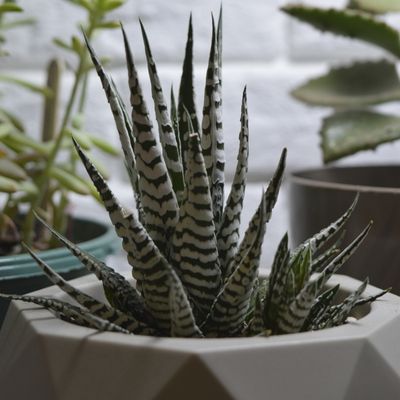
These plants are easy to care for and are well-suited to indoor growing. They prefer bright, indirect sunlight and well-draining soil. They can be propagated by removing offsets or by leaf cuttings.
Haworthia plants are often used in terrariums and other indoor plant displays due to their small size and interesting texture. They are also sometimes used in traditional medicine in southern Africa to treat a variety of ailments.
3. Echeveria
Echeveria is a genus of succulent plants. They are popular among succulent enthusiasts and are often grown as ornamental plants due to their attractive rosette-shaped leaves and bright colors.
Echeveria plants can vary in size and shape, but they generally have thick, fleshy leaves that form rosettes. The leaves may be smooth or covered in a powdery coating, and they can range in color from green to pink to purple to blue-gray. Some species produce tall, branching flower stalks with clusters of small, bell-shaped flowers.
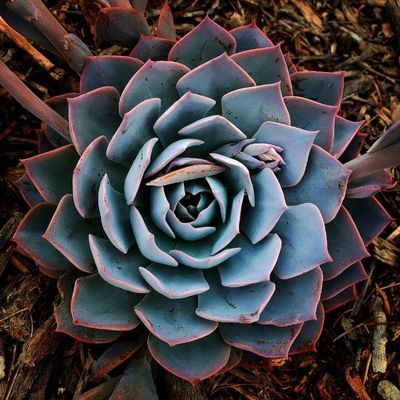
These plants are easy to care for and are well-suited to indoor growing. They prefer bright, indirect sunlight and well-draining soil. They can be propagated by removing offsets or by leaf cuttings.
Echeveria plants are often used in succulent gardens, rock gardens, and other outdoor plant displays. They are also popular as indoor plants and can be grown in pots or other containers.
4. Sedum
Sedum is a large genus of succulent plants that are native to many parts of the world, including North America, Europe, and Asia. They are commonly grown as ornamental plants due to their attractive foliage and ability to thrive in a variety of growing conditions.
Sedum plants can vary in size and shape, but they generally have fleshy leaves that are often arranged in rosettes. The leaves can range in color from green to gray to purple to red, and some species have variegated or patterned foliage. Many Sedum species produce clusters of small, star-shaped flowers in shades of pink, yellow, white, or red.

These plants are easy to care for and are well-suited to outdoor growing. They prefer well-draining soil and can tolerate a range of temperatures and growing conditions. Some species are even able to grow in rocky or sandy soil and are well-suited to rock gardens.
Sedum plants are often used in succulent gardens, rock gardens, and other outdoor plant displays. They are also popular as indoor plants and can be grown in pots or other containers. Some Sedum species are even used in traditional medicine to treat a variety of ailments.
5. Kalanchoe
Kalanchoe plants can vary in size and shape, but they generally have thick, fleshy leaves that are often arranged in rosettes. The leaves can range in color from green to gray to silver to purple, and some species have variegated or patterned foliage. Many Kalanchoe species produce clusters of small, bell-shaped flowers in shades of pink, yellow, white, or red.
These plants are easy to care for and are well-suited to indoor growing. They prefer bright, indirect sunlight and well-draining soil. They can be propagated by stem cuttings or by removing offsets.

Kalanchoe plants are often used in succulent gardens, rock gardens, and other outdoor plant displays. They are also popular as indoor plants and can be grown in pots or other containers. Some Kalanchoe species are even used in traditional medicine to treat a variety of ailments.
6. Crassula
Crassula plants can vary in size and shape, but they generally have thick, fleshy leaves that are often arranged in rosettes. The leaves can range in color from green to gray to red to brown, and some species have variegated or patterned foliage. Many Crassula species produce clusters of small, star-shaped flowers in shades of pink, white, or red.
These plants are easy to care for and are well-suited to outdoor growing. They prefer well-draining soil and can tolerate a range of temperatures and growing conditions. Some species are even able to grow in rocky or sandy soil and are well-suited to rock gardens.
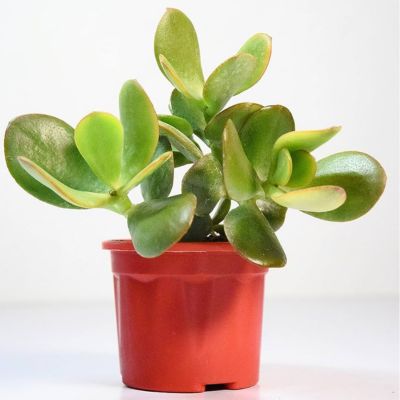
Crassula plants are often used in succulent gardens, rock gardens, and other outdoor plant displays. They are also popular as indoor plants and can be grown in pots or other containers. Some Crassula species are even used in traditional medicine to treat a variety of ailments.
7. Portulaca
Portulaca plants can vary in size and shape, but they generally have small, succulent leaves that are arranged in a spreading or trailing habit. The leaves can range in color from green to yellow to red, and some species have variegated foliage. Portulaca plants produce showy, cup-shaped flowers in shades of pink, red, orange, yellow, and white. The flowers open during the day and close at night.
These plants are easy to care for and are well-suited to outdoor growing. They prefer well-draining soil and can tolerate hot, dry conditions. They are also drought-tolerant and do not require much water. Portulaca plants can be propagated by seed or by stem cuttings.
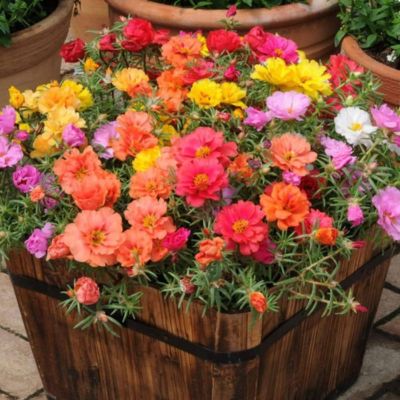
Portulaca plants are often used in rock gardens, as ground cover, and in hanging baskets or other containers. They are also popular as border plants or in mixed flower beds.
8. Agave
Agave plants can vary in size and shape, but they generally have thick, fleshy leaves that form a rosette. The leaves can range in color from green to gray to blue to purple, and some species have variegated or patterned foliage. Agave plants do not produce flowers until they are several years old, and when they do, they produce a tall stalk with clusters of small, bell-shaped flowers.
These plants are easy to care for and are well-suited to outdoor growing. They prefer well-draining soil and can tolerate a range of temperatures and growing conditions. Some species are even able to grow in rocky or sandy soil and are well-suited to rock gardens.
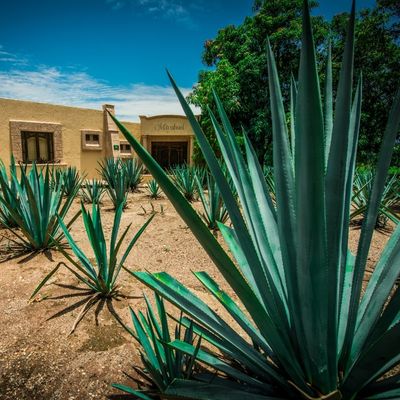
Agave plants are often used in succulent gardens, rock gardens, and other outdoor plant displays. They are also popular as indoor plants and can be grown in pots or other containers. Some species of Agave are even used to produce tequila and other alcoholic beverages.
9. Jade Plant
Jade Plant has thick, fleshy leaves that are oval-shaped and shiny, and they grow on thick stems that can be woody over time. The leaves are typically green, but they can also have a red or bronze tint. The plant produces small, star-shaped white or pink flowers in the late winter or early spring.
Jade Plant is a relatively easy plant to care for and is drought-tolerant, making it ideal for those who are new to gardening or who have limited time to care for plants. It prefers well-draining soil and bright, indirect sunlight, and it should be watered when the soil is dry to the touch. Overwatering can lead to root rot, so it’s important to allow the soil to dry out completely between waterings.
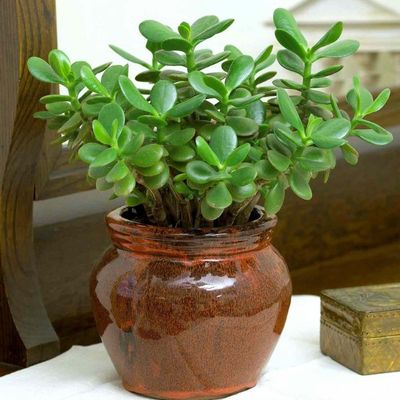
Jade Plant is often used in indoor plants, particularly in small pots or hanging baskets. It is popular as a gift plant and also popular types of Succulents in India, particularly during the winter holiday season.
10. Snake Plant
The snake Plant has long, upright leaves that are stiff and sword-shaped. The leaves are typically green with yellow or white variegation, and they grow from a central rosette. The plant produces small, fragrant white flowers on a tall stem in the late fall or winter.
Snake Plant is a very easy plant to care for and is drought-tolerant, making it ideal for those who tend to forget to water their plants. It prefers well-draining soil and bright, indirect sunlight, but it can also tolerate low-light conditions. Snake Plants should be watered sparingly, only when the soil is completely dry to the touch, as overwatering can lead to root rot.

Snake Plant is often used as indoor plant for their air-purifying properties, as it has been shown to remove toxins such as benzene, formaldehyde, and trichloroethylene from the air. It is also a popular office plant, as it can thrive in low-light conditions and does not require much attention.
These are just a few examples of the many types of succulents available in India. With their unique appearance and easy care requirements, succulents are a popular choice for home decor and landscaping.
Top Reasons To Buy Succulents
There are many reasons why people choose to buy succulents, including:
- Low maintenance: Succulents are generally easy to care for and require minimal watering and maintenance.
- Unique appearance: Succulents come in a wide variety of shapes, sizes, and colors, making them a popular choice for home decor and landscaping.
- Air purification: Like many other plants, succulents can help improve air quality by absorbing toxins and releasing oxygen.
- Stress relief: Caring for plants has been shown to be calming and can help reduce stress levels.
- Health benefits: Some succulents, like aloe vera, have medicinal properties and can be used to treat minor cuts, burns, and skin irritations.
- Educational value: Succulents can be a great way to introduce children to the world of gardening and teach them about plant care and responsibility.
- Sustainability: Succulents are a sustainable choice for home decor and landscaping as they require less water than many other plants.
- Indoor gardening: Succulents are a great option for those who don’t have access to outdoor space or live in areas with harsh climates.
Overall, succulents are beautiful and versatile plants that can offer a range of benefits to their owners. Whether you’re looking for a low-maintenance houseplant or want to add some interest to your garden, succulents are definitely worth considering.
How to Care for Succulents Indoors
Remember that different species of Succulents may have specific care requirements, so it’s important to research the needs of your specific plants. With proper care, succulents can thrive indoors and add a touch of natural beauty to your home.
Tips for Caring Different Types of Succulents in India
Light
Succulents generally require bright, indirect sunlight. Place them near a window that gets plenty of light, but avoid placing them in direct sunlight, especially during the hottest parts of the day.
Watering
Succulents are adapted to dry environments and do not require frequent watering. Wait until the soil has completely dried out before watering, and then water thoroughly, allowing the excess water to drain away.
Soil
Succulents require well-draining soil. Choose a commercial cactus, or succulent mix, or mix regular potting soil with perlite or coarse sand to improve drainage.
Temperature
Most succulents prefer warm temperatures, between 60-80°F (15-27°C). Avoid exposing them to extreme temperatures, drafts, or sudden changes in temperature.
Humidity
Succulents prefer low-humidity environments, so avoid placing them in areas with high moisture, such as bathrooms or kitchens.
Fertilizer
Succulents do not require frequent fertilization, but you can feed them with a balanced, water-soluble fertilizer during the growing season (spring and summer) at half-strength.
Potting
Choose a pot with drainage holes and avoid using a pot that is too large for the plant. Repot succulents when they outgrow their container or when the soil has become compacted.
Conclusion
These are the most common types of succulents in India. That is perfect for the Indian climate.
Read Next Blog:
25 Types of Succulents with Pictures and Names
